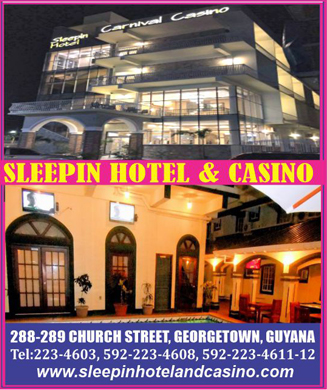PRESIDENT, Dr. Irfaan Ali’s recent announcement that the Ministry of Housing will, within six weeks, complete a study for a potential commercial rail link along the East Bank and East Coast of Demerara corridors, signals a bold and forward-thinking chapter in Guyana’s infrastructure transformation.
It is more than a feasibility study, it is the rekindling of an idea that once defined our nation’s early development and could once again reshape its future.
For decades, Guyana has grappled with mounting traffic congestion, particularly along the East Bank and East Coast highways, arteries that connect the nation’s most populous and economically active regions.
Despite massive investments in modern road networks, including the Ogle-to-Eccles Highway, the Mandela-to-Eccles four-lane road, and the Great Diamond-to-Buzz Bee Dam link, commuters still face daily gridlock, especially during peak hours.
The government’s infrastructural push has been transformative, yes, but it has also underscored the reality that road expansion alone cannot sustainably solve urban congestion.
The President’s rail proposal introduces a visionary alternative, one that marries Guyana’s growing urbanization with sustainable mobility.
If realized, a commercial rail link between the East Bank and East Coast corridors could drastically cut travel time, reduce vehicular pressure on highways, and support the smooth movement of both people and goods.
It could also connect major residential and commercial hubs, creating a more integrated transport system that aligns with the nation’s economic expansion and population growth.
Historically, Guyana’s railway system was a source of pride and efficiency.
The Demerara-Berbice and Demerara-Essequibo lines were once vital lifelines, connecting communities and supporting commerce before they fell into disuse decades ago.
Their revival, in a modern, electrified, and commercially viable form, would mark not just a return to the past, but a re-invention for the future.
Of course, ambition must meet careful planning. A rail project of this scale requires comprehensive feasibility analysis, including cost projections, land-use implications, and long-term maintenance plans.
It also demands inter-agency collaboration, strong environmental safeguards, and forward-looking financing models.
The six-week study announced by the President is, therefore, a critical first step, one that must balance vision with pragmatism.
Importantly, this discussion cannot be confined to transport efficiency alone.
The introduction of a railway system could stimulate satellite townships, encourage urban decentralization, and boost investment along the corridors it traverses.
It could also contribute to Guyana’s climate resilience by reducing carbon emissions associated with heavy vehicular traffic, aligning national development goals with global sustainability commitments.
President Ali’s infrastructure drive has already reshaped Guyana’s landscape. From the Great Diamond to Soesdyke highway extension to the massive Ogle-to-Eccles artery, the administration has built the foundation for a modern, interconnected Guyana. But the rail link, if pursued, could be the missing piece that completes this vision, transforming mobility into a catalyst for long-term national growth.
The question now is not whether Guyana needs a railway, but whether it can afford not to have one.
In the context of rapid economic expansion and increasing urban congestion, this study could mark the beginning of a transportation revolution, one that reconnects Guyanese not only across regions but with a shared vision of progress.



.jpg)






